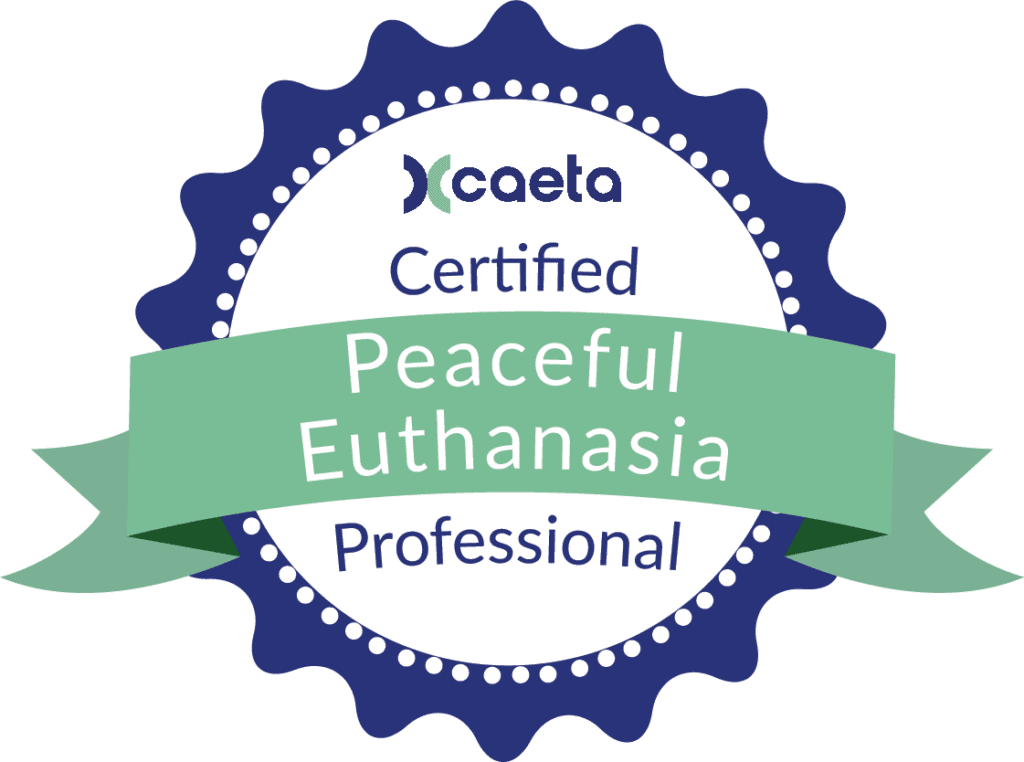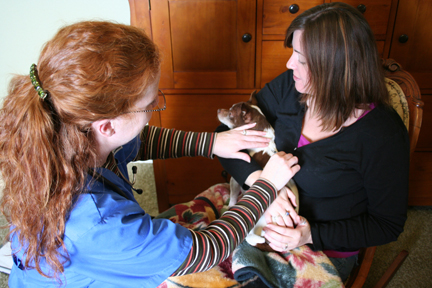Euthanasia Techniques
CAETA Euthanasia Case; Tommy the edematous dog
The Companion Animal Euthanasia Training Academy (CAETA) invites you to consider the following fictional euthanasia case and reflect on how to proceed. After reviewing the case, read the questions and consider your answers before continuing on to CAETA’s suggestions. This case is designed to test your knowledge of companion animal euthanasia and be a conversation…
Read MoreWhat It’s Like to Euthanize Animals at the Local Animal Shelter as a Locum
Euthanizing companion animals is a familiar part of our culture, and it occurs at the veterinary hospital, the home, or the animal shelter. Animals deemed too sick or unable to return to society are often euthanized in shelters, and the numbers remain high in many communities, high enough to place a significant burden on the…
Read MoreApproaching Clients’ Euthanasia Decisions with Less Judgment
Deciding to euthanize a beloved family pet is hard work for most clients. It’s hard for them to know what’s best as their pet ages, succumbs to a disease, or struggles with poor mental health. Veterinary teams working with pet patients as they near the end of life have experience in this area and are…
Read MoreA Message of Strength for DVM Graduates
It’s the season of graduation for thousands of newly-minted veterinarians. This blog is for you graduates as you prepare to care for dying patients. It can feel scary to navigate end-of-life conversations and facilitate a gentle death. Let’s take what you’ve learned in school and reflect on what clients and pet patients need during such…
Read MoreFellow CPEPs. Welcome to the family!
Congratulations are in order! You have a new career achievement, becoming a Certified Peaceful Euthanasia Professional (CPEP). Offered especially for veterinary technicians, assistants, social workers, and practice managers, it means you have completed the Companion Animal Euthanasia Training Academy’s (CAETA) 10-hour certification program (veterinarians earn the designation of CPEV). Our hats are off to you,…
Read MoreCAETA Euthanasia Case; Bella the painful cat
The Companion Animal Euthanasia Training Academy (CAETA) invites you to consider the following fictional euthanasia case and reflect on how to proceed. After reviewing the case, read the questions and consider your answers before continuing on to CAETA’s suggestions. This case is designed to test your knowledge of companion animal euthanasia and be a conversation…
Read MoreReceiving Phone Calls About Euthanasia; CSRs – this one’s for you
As a receptionist or customer service representative (CSR), picking up the phone to discover a client is making their pet’s euthanasia appointment can be difficult. For one, you may be caught off guard, and secondly, it’s simply a tough conversation. You may have clients standing next to you in the front office able to hear…
Read MoreMy First Euthanasias Weren’t the Best, and That’s OK
If you’ve spent enough time with me, you’ve likely heard about my first few euthanasia experiences, and how they weren’t my best. Compassionate yes, but technically challenging for me. My stories include such things as hard-to-find veins, not allowing a client to be in the room due to my inadequacies, a vomiting dog, diarrhea on…
Read MoreThe Benefits of Having a Euthanasia Training Manual
“Endings Matter,” explains Dr. Kathleen Cooney. Veterinary patients, clients, and team members deserve to experience and deliver a peaceful euthanasia service each and every time. The veterinary team that takes advantage of a Euthanasia Training Manual (ETM) will reap the benefits in delivering a consistent, gentle euthanasia. ETMs hold the hospital’s standard operating procedures (SOP)…
Read MoreAssessing Unconsciousness Before Intraorgan Euthanasia Injections in Pets
With the recent trend of intraorgan euthanasia methods on the rise in animals as reported by the Companion Animal Euthanasia Training Academy (CAETA), I want to offer useful pointers on how to ensure unconsciousness and avoid pain. If you are new to the concept of giving pentobarbital (euthanasia solution) in locations other than veins, the…
Read More














